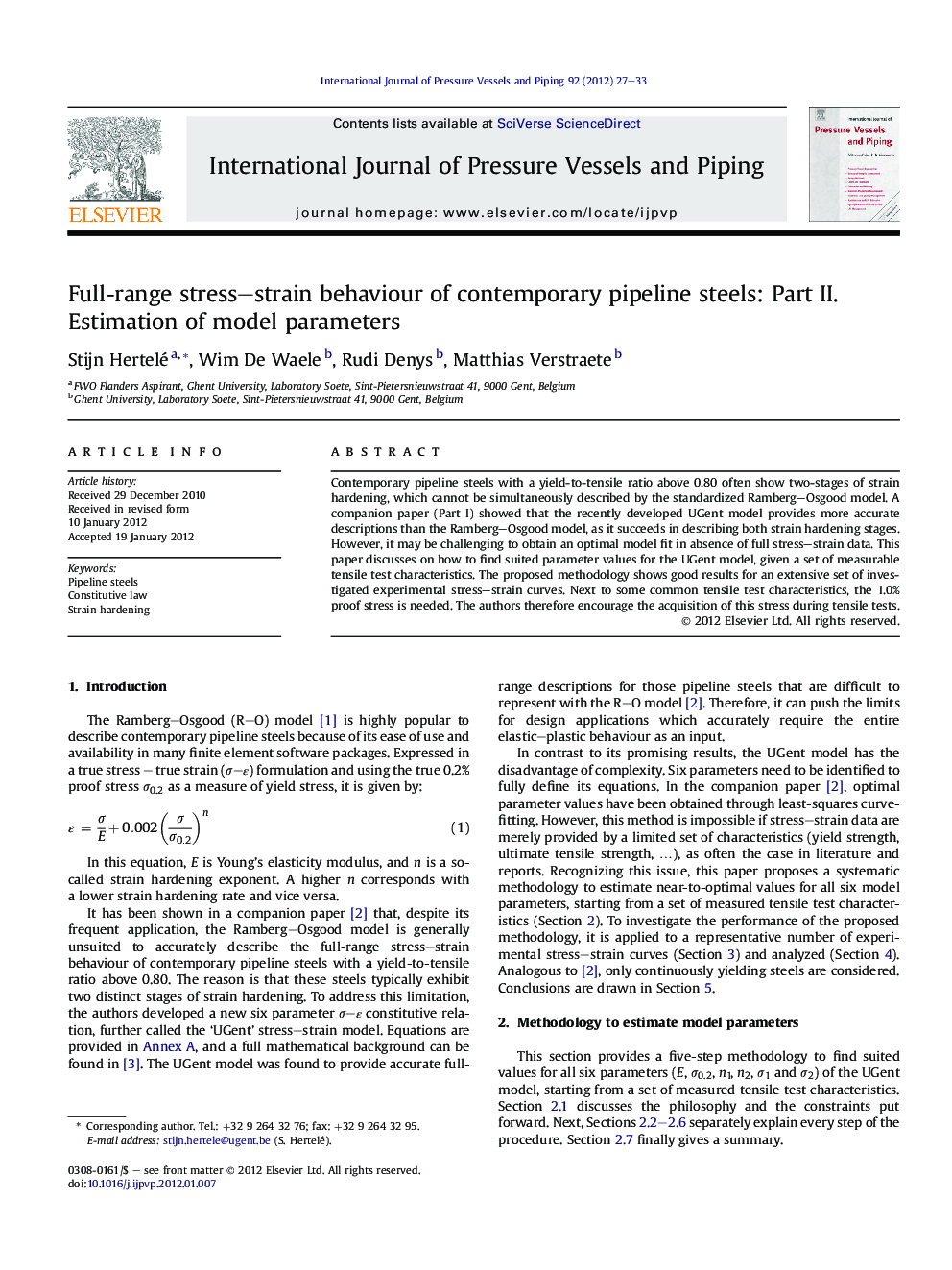| Article ID | Journal | Published Year | Pages | File Type |
|---|---|---|---|---|
| 785424 | International Journal of Pressure Vessels and Piping | 2012 | 7 Pages |
Contemporary pipeline steels with a yield-to-tensile ratio above 0.80 often show two-stages of strain hardening, which cannot be simultaneously described by the standardized Ramberg–Osgood model. A companion paper (Part I) showed that the recently developed UGent model provides more accurate descriptions than the Ramberg–Osgood model, as it succeeds in describing both strain hardening stages. However, it may be challenging to obtain an optimal model fit in absence of full stress–strain data. This paper discusses on how to find suited parameter values for the UGent model, given a set of measurable tensile test characteristics. The proposed methodology shows good results for an extensive set of investigated experimental stress–strain curves. Next to some common tensile test characteristics, the 1.0% proof stress is needed. The authors therefore encourage the acquisition of this stress during tensile tests.
► An analytical procedure estimates UGent model parameters. ► The procedure requires a set of tensile test characteristics. ► The UGent model performs better than the Ramberg–Osgood model. ► Apart from common characteristics, the 1.0% proof stress is required. ► The authors encourage the acquisition of this 1.0% proof stress.
